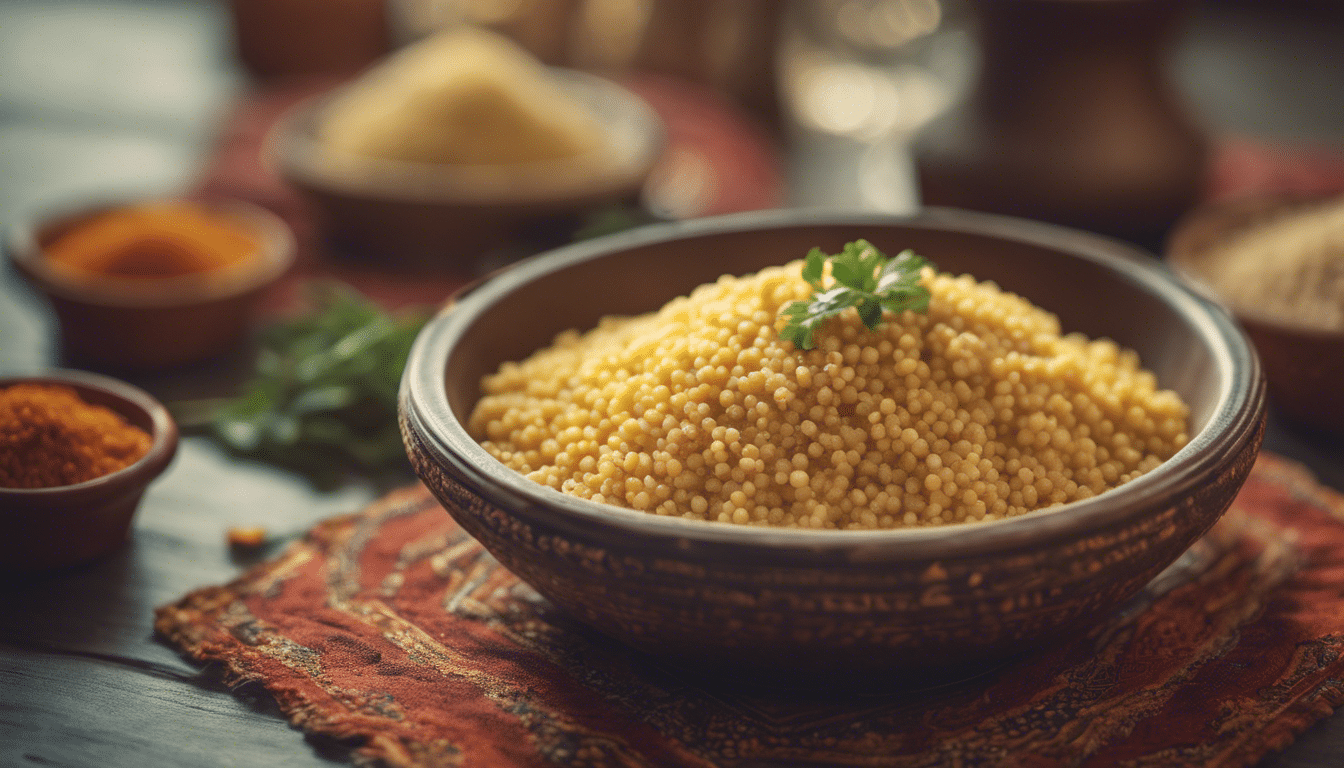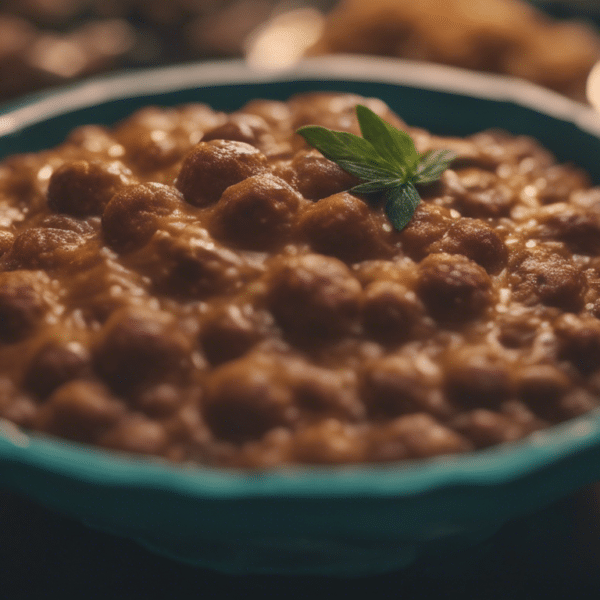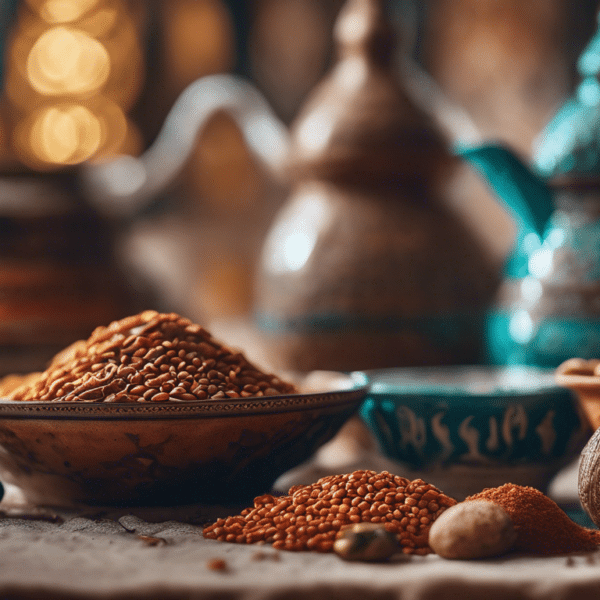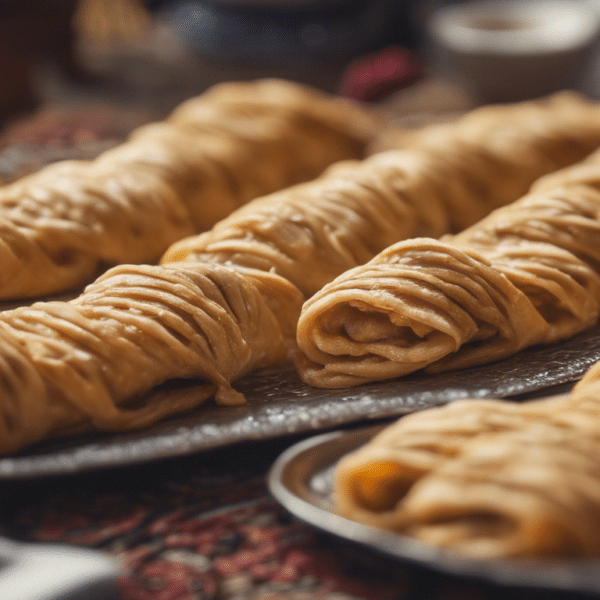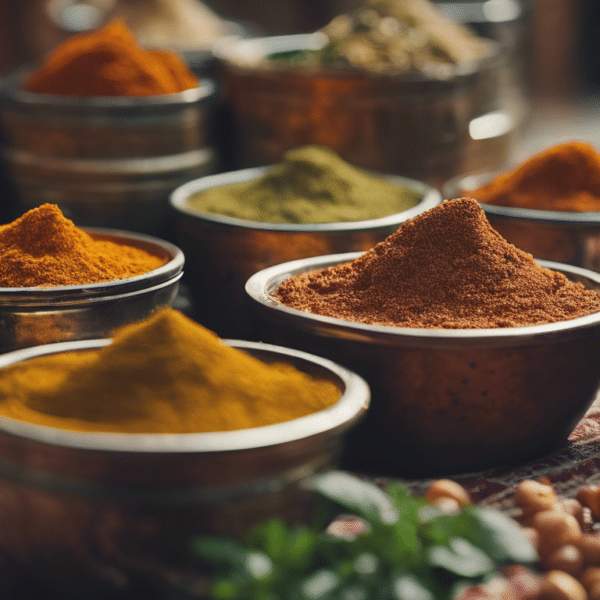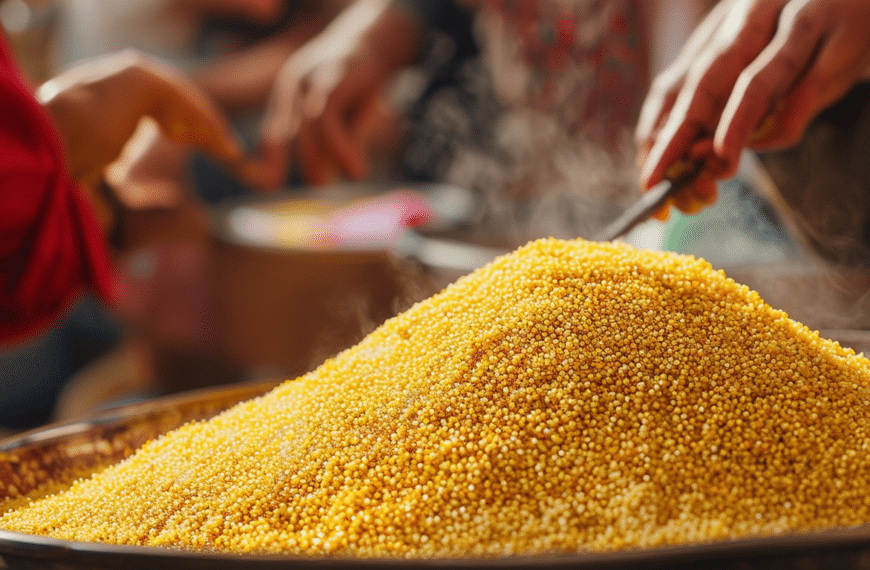Dive into the heart of Moroccan gastronomy with a twist of velvety delight! Imagine grains of couscous so sumptuously creamy, they melt harmoniously with each fragrant spice and tender morsel that graces your palate. In this culinary adventure, we unveil a treasure trove of the creamiest and most delectable Moroccan couscous options that promise to transform your dining into a celebration of textures and tastes. Prepare to embark on an epicurean journey where tradition meets your most indulgent desires, and every spoonful feels like an embrace from the rich Moroccan heritage. Get ready, your ultimate couscous experience awaits! 🍴✨
Discovering the Creamiest Moroccan Couscous
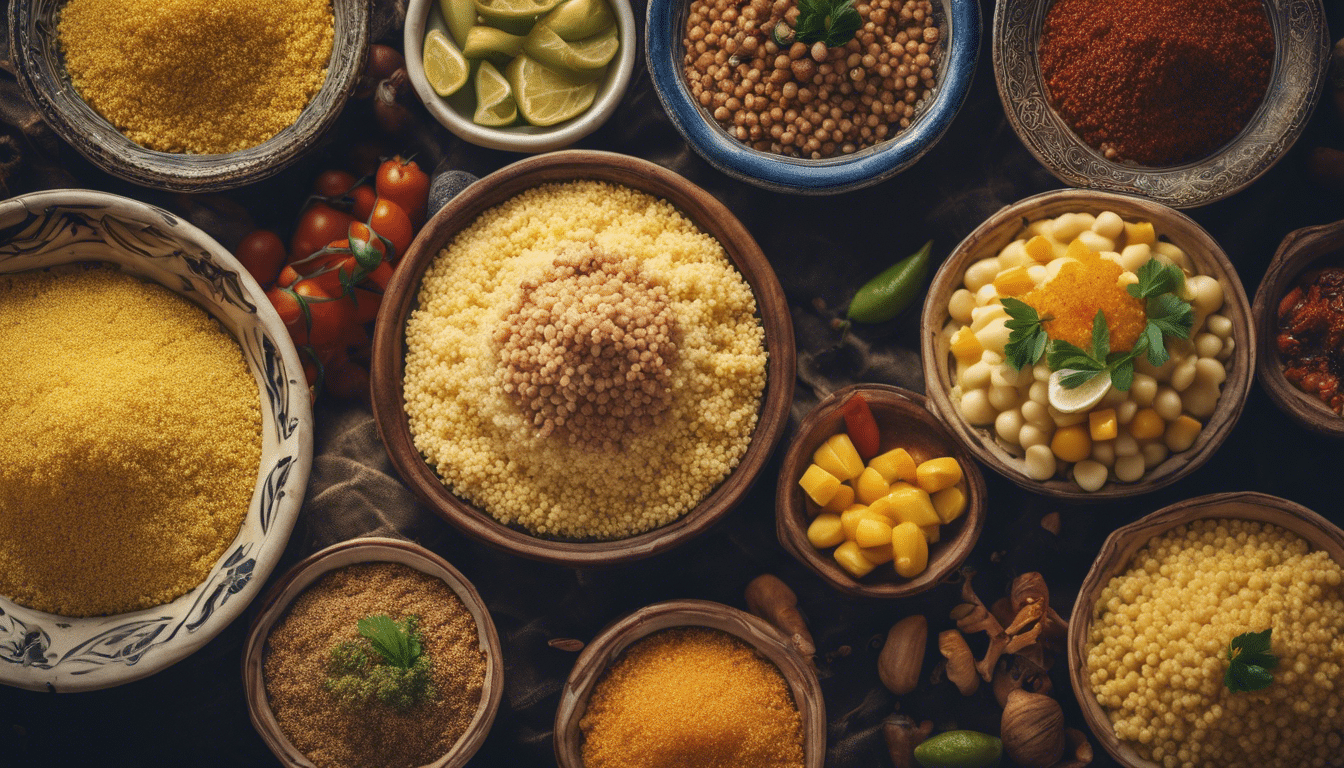
Embarking on a Culinary Journey to Creamy Delights
Immersing oneself in the world of Moroccan cuisine is akin to diving into a vibrant tapestry of flavors and textures. At its heart lies the iconic Moroccan couscous, a dish that conjures images of family gatherings and rich, soulful experiences. When on the quest for the ultimate creamy couscous, one must venture beyond the mere preparation of semolina granules and embrace the subtleties that make it so treasured.
Imagine the couscous grains, each a perfect sphere, imbibing the fragrant steam of a lovingly spiced broth. The secret is patience; allowing the granules to swell and separate is the artisan’s way. Moroccan couscous is not merely a dish; it’s an art form, a testament to the care and affection poured into every stage of its creation.
To uncover the creamiest version of this beloved staple, one must look to the traditional kitchen, where time-honored techniques and ancestral wisdom converge. It is there that the creamiest of couscous makes its whispered promises to the palate.
Unveiling the Techniques for Silken Textures
Crafting the most sumptuous Moroccan couscous requires more than mere ingredients; it requires the very soul of the chef to be woven into the process. Garnished with a treasure trove of vegetables and meats, the base for our culinary marvel sits atop a simmering pot, where it’s steamed to perfection, not once but thrice. Each steaming is punctuated with meticulous fluffing, the grains coaxed apart with either the tender fingertips of the chef or the gentle kiss of olive oil and butter.
This repetition is not a trifling matter. It ingrains the couscous with its characteristically light yet richly comforting texture. This method, when mastered, imparts a silkiness that allows the grains to stand individual yet coalesce in a harmonious and satisfying blend.
Selecting Ingredients That Whisper Quality
No culinary masterpiece can be birthed without impeccable ingredients. The base of fine Moroccan couscous lies in its grain choice—only the highest quality, as their ability to absorb the surrounding flavors is unparalleled. Accompanying these grains are the freshest vegetables, vibrant and colorful, each lending their essence while absorbing the spices’ soul.
The broth, a liquid elixir capturing the essence of herbs and spices, is not to be overlooked. Whether it’s suffused with the richness of lamb, the heartiness of chicken, or the verdant bounty of vegetarian kindness, it is this spiced nectar that imparts moisture and binds the grains in creamy unison.
Embellishing with Accents of Flavor and Tradition
The pursuit of the creamiest couscous is incomplete without the addition of traditional embellishments. Nuts, dried fruits, and aromatic herbs serve not only to titillate the senses but also to pay homage to the authentic spirit of Moroccan festivities. A sprinkle of toasted almonds or a handful of plump raisins can elevate the dish from simple sustenance to a celebratory feast.
What must not be overlooked is the power of the sauce. The intricate dance of spices within a well-crafted sauce enfolds each grain, bestowing a final kiss of flavor, sealing the couscous’s fate as a dish of pure comfort and delight.
Savoring the Fruits of Patience and Passion
Ending this culinary voyage, the moment of fruition arrives; a steaming plate of the creamiest couscous is set before you, a soft mountain of grains, rich with the promise of taste that beckons. It is through the meticulous labor of love, the deft balance of spice and ingredient, that the culmination of your journey rests upon your spoon.
And as you partake in this tradition-steeped dish, remember, the soul of Moroccan cuisine echoes not only in the bountiful flavors but in the shared experiences it evokes. It is the connection to a culture, a history, and to the hands that carefully prepared your plate of creamy Moroccan couscous.
Exploring Traditional Ingredients for Luscious Couscous
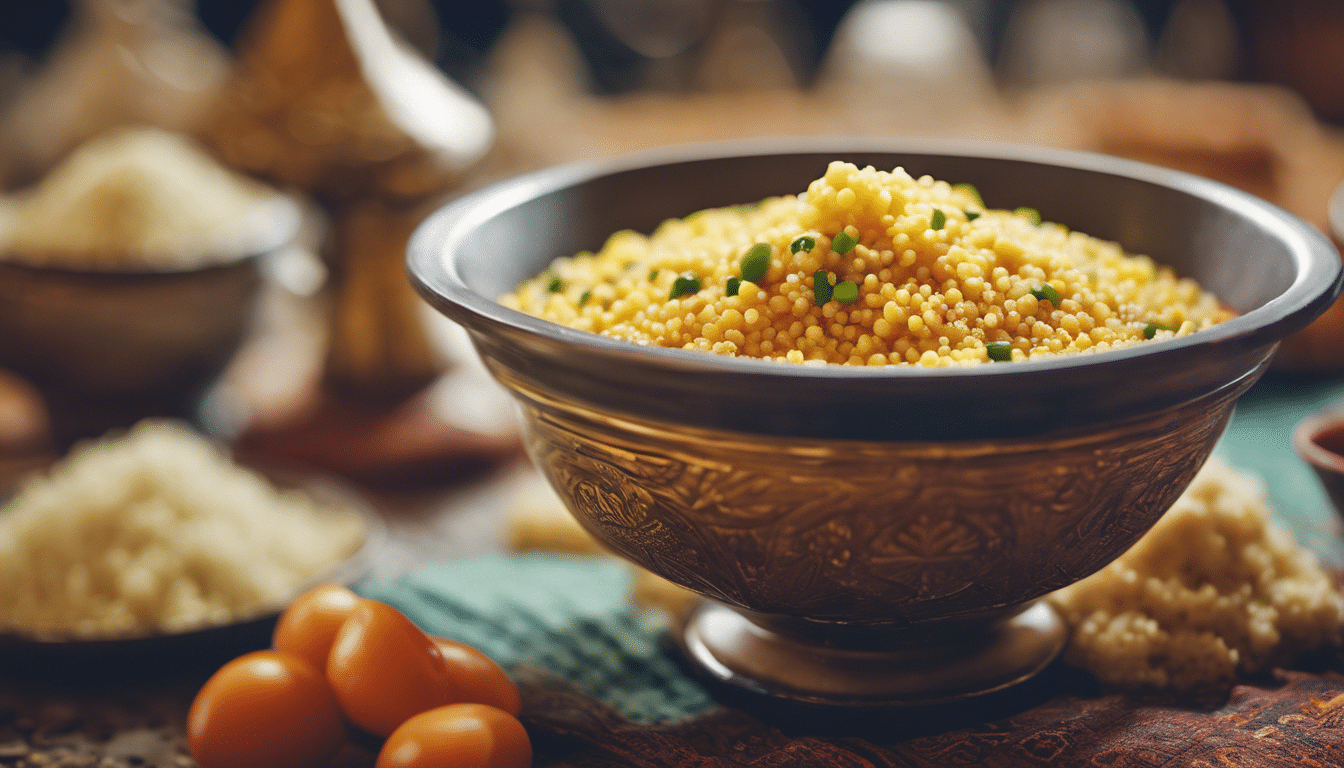
Moroccan couscous: Exploring Traditional Ingredients for Luscious Couscous
The heart of Morocco beats in its kitchens, and at the very core is *couscous*, the grain that sings the tales of Berber heritage and savory delight. When the swirls of steam rise from a fluffy mound of couscous, they carry with them the aromas of distant lands and the whispers of ancestral secrets. To cherish couscous is to appreciate the symphony of ingredients that make it a dish celebrating Morocco itself. Let’s weave through the bustling souks and serene landscapes to discover the traditional ingredients that make Moroccan couscous a luscious feast for the senses.
Semolina: The Golden Foundation
At the cradle of any couscous lies the semolina. This golden granule, ground from the heart of durum wheat, cradles the essence of the earth. For a truly authentic Moroccan couscous, the choice of semolina is pivotal – its caliber decides the dish’s destiny. A fine semolina yields a more delicate texture, reminiscent of the soft sands of Erg Chebbi dunes, while a coarser grind promises a heartier bite, echoing the robust atmosphere of the Atlas Mountains.
The Seven Vegetables: An Ensemble of Earth’s Bounty
In the traditional Moroccan lexicon, the number seven holds a charm – it symbolizes perfection, a mystical number that reflects in the customary choice of vegetables. The amalgamation of seven vegetables in couscous isn’t just for nutrition but also for a balance of flavors. Carrots, zucchini, squash, turnips, and bell peppers dance together with chickpeas and tomatoes, creating a vibrant tapestry of textures and tastes. Each contributes its distinct melody, harmonizing to the rhythm of Moroccan generosity.
Proteins: The Heartbeat of Heft
Be it tender pieces of lamb, chicken, or merguez sausage, the choice of protein in Moroccan couscous is a testament to its versatility. Slow-cooked, these succulent chunks absorb the spices and infuse the couscous with depth. For the ocean’s whisper, fresh fish or even seafood can be nestled within the couscous, offering a delicate brine that pairs perfectly with the sweet and earthy vegetables.
Spices and Herbs: The Essence of Aroma
If Morocco had an olfactory anthem, it would be played out through its spices. The collision of cinnamon, saffron, turmeric, and ginger in couscous is transformative. When married with a hint of parsley or coriander, these spices create an odyssey of flavor that can transport any diner to the vibrant alleyways of Marrakech or Fez. The artistry lies in their proportion – a dash here, a pinch there – building layers that enshroud the couscous in warmth and welcome.
Broth: The Silken River of Flavor
The infusion of a robust broth brings life to couscous. Whether it’s a golden-hued chicken stock or a rich lamb concoction, the broth is the river upon which all other ingredients sail. It bathes the grains, coaxing them to swell and soften, while it carries the flavor deep within the heart of the couscous.
Nuts and Dried Fruits: The Whispers of Sweetness
No Moroccan feast is complete without the echoes of sweetness. In couscous, the subtle inclusion of raisins, dates, or apricots collide with the earthiness to bring forth a whisper of dessert suns. Almonds or pine nuts toasted and scattered atop not only offer a satisfying crunch but are also little jewels that glitter with the promise of hidden delights.
Embarking on the journey of creating luscious Moroccan couscous is to embark on a tale of tradition. It’s a labor of love that begins with the choice of ingredients, each telling its own story. Whether you find yourself beneath the North African sky or are merely dreaming of its landscapes, let these traditional ingredients inspire you to craft a dish that’s as heartwarming as the land itself.
The Secrets of Cooking Perfectly Creamy Couscous
Embark on a culinary expedition through the heart of Morocco, as we unravel the secrets to preparing the crown jewel of North African cuisine: creamy couscous. This staple, though seemingly simple, carries the soul of Moroccan hospitality and warmth, inviting food lovers to a world where each grain embodies tradition and flavor.
The Art of Selecting the Right Ingredients
The journey to luscious couscous begins with selecting the finest semolina. Ideally, the perfect couscous is neither too coarse nor too fine – it’s a delicate balance that promises the best texture. Alongside semolina, consider the quality of the broth. Will it be chicken, lamb, or maybe vegetable for a vegan twist? A robust, savory broth not only cooks the grains but impregnates them with every simmering whisper of spice and herb in your pot.
Mastering the Couscous-to-Liquid Ratio
Now, let’s delve into the essence of texture – the couscous-to-liquid ratio is critical. For each cup of couscous, one typically uses one and a half cups of broth. No more, lest the grains drown, and no less, or you’ll find them parched and unwelcoming. The broth, brought to a rolling boil, is the liquid symphony that will dance with the couscous, ensuring each grain swells to just the right degree of tenderness.
The Secret Steaming Process
Unlike some hurried grains that simply boil in water, couscous demands patience, longing for the embrace of steam. This is where the magic unfolds – a traditional couscoussier or a makeshift steamer becomes your tool to coax the couscous into its most voluptuous form. A first steaming to awaken the grains, and then, after some gentle fluffing, a second ascend to steam ensures the couscous is evenly cooked. Remember, treat the couscous gently; it’s a tender art, not a rushed job.
Enriching with Butter or Oil
Now, the grand conductor of creaminess steps in – butter or oil. This addition, often a generous one, is massaged into the warm, plumped couscous, bestowing it with an irresistible silkiness that makes it glide off the spoon and melt luxuriously in the mouth. It’s a collaboration of texture and taste that encourages every grain to thrive in its creamy persona.
Garnishing with Traditional Flavors
As if the couscous wasn’t already singing with flavors, traditional garnishes like caramelized onions, cooked vegetables, and toasted almonds add layers of depth and character. A sprinkle of fresh herbs brings brightness to the dish, connecting every ingredient in a colorful and flavorsome embrace. This is more than mere decoration; it’s a vital chapter in the story of creamy couscous.
Serving with Moroccan Grace
The final act joins the creamy couscous with its companions – perhaps a ladle of stew, grilled meat, or a vibrant array of vegetables. In keeping with Moroccan generosity, it’s served on a large communal platter, a symbol of unity and shared joy. The perfect couscous is not only a testament to your cooking prowess but an invitation to gather, to savor, and to create memories around the Moroccan table.
Luxuriate in the creamy splendor that is Moroccan couscous, a dish that transcends its humble origins to deliver an experience of comfort and conviviality. Each grain a whisper of Moroccan flavor, every spoonful a creamy wonder – this is the art and soul of a dish best savored in good company, with a zest for life as vibrant as the land from which it hails.

